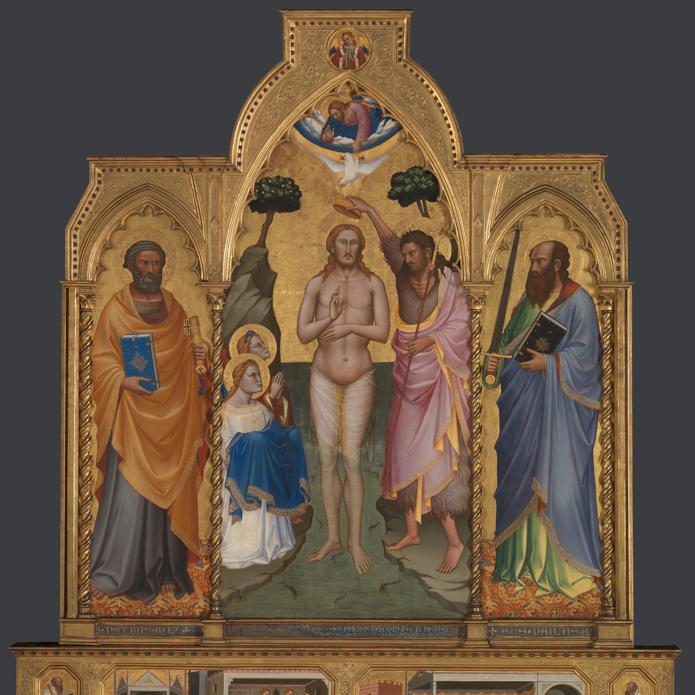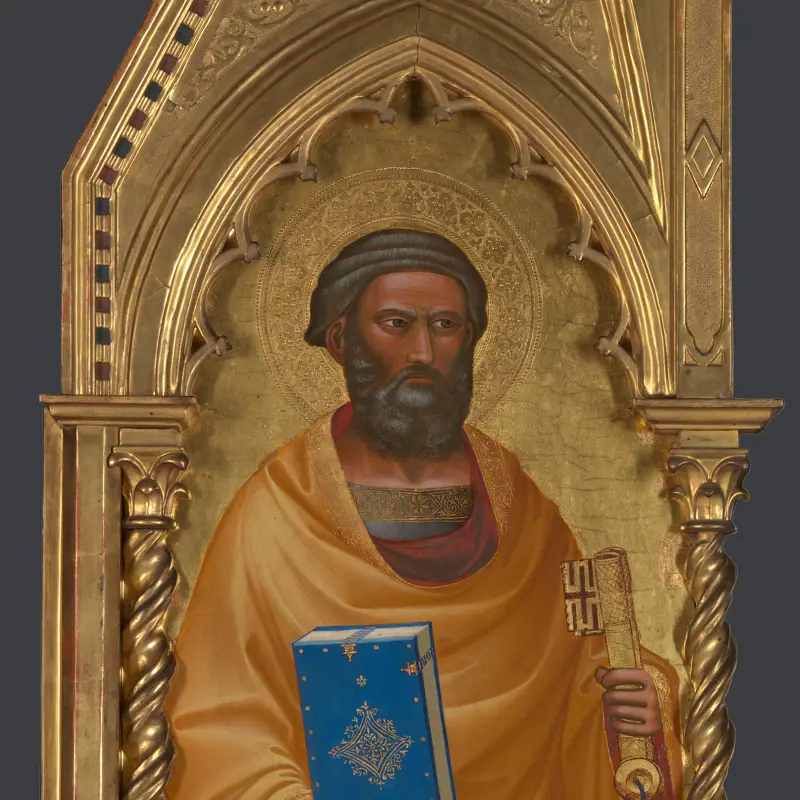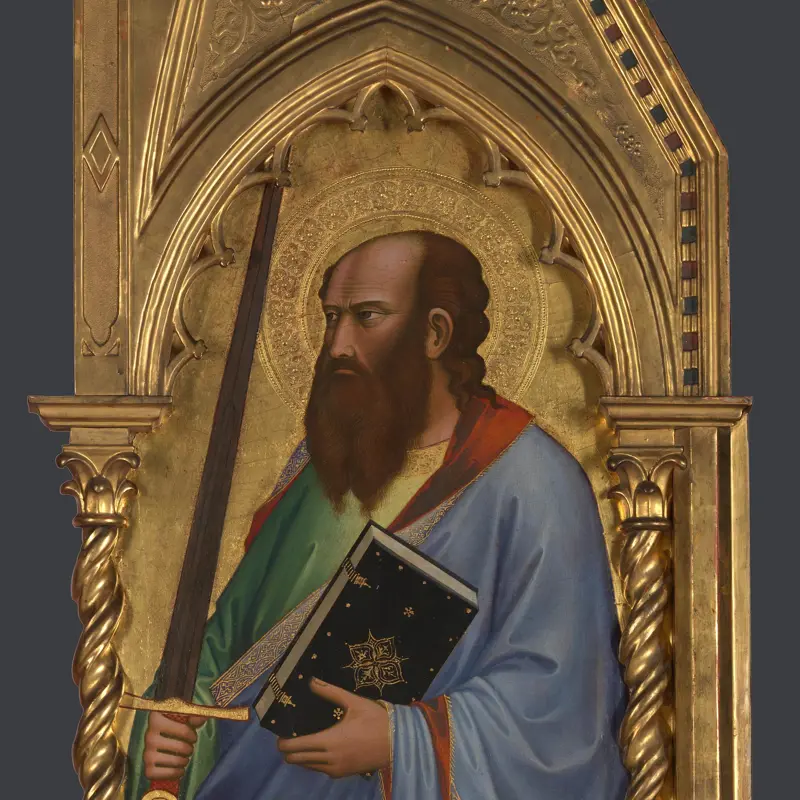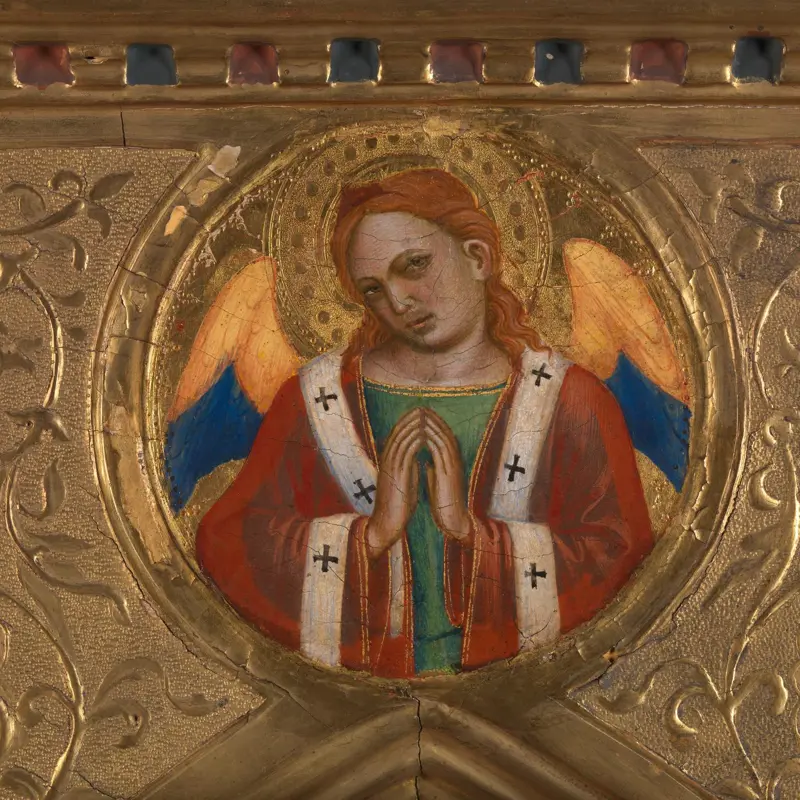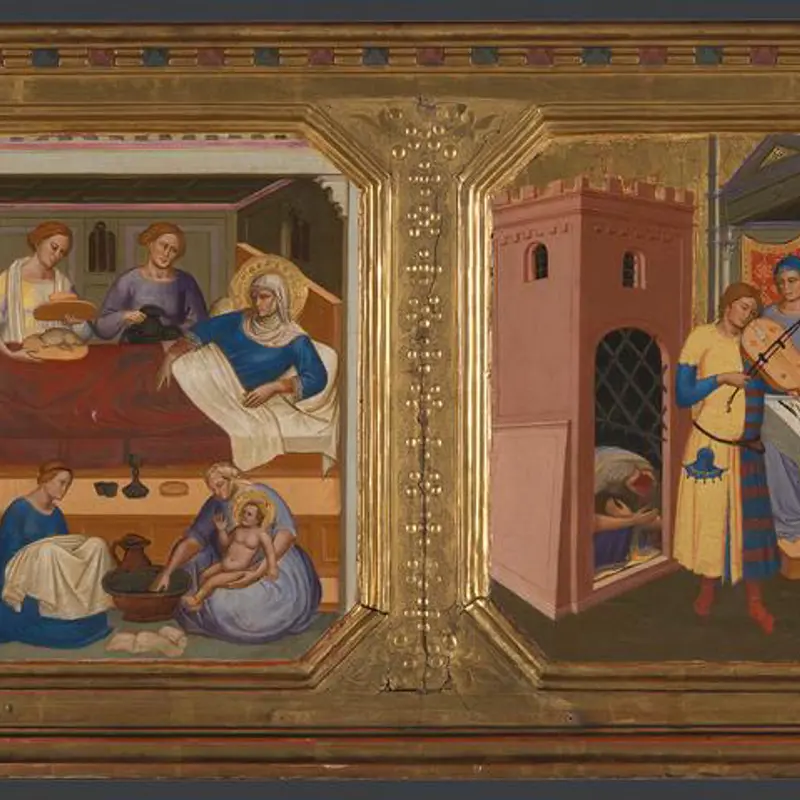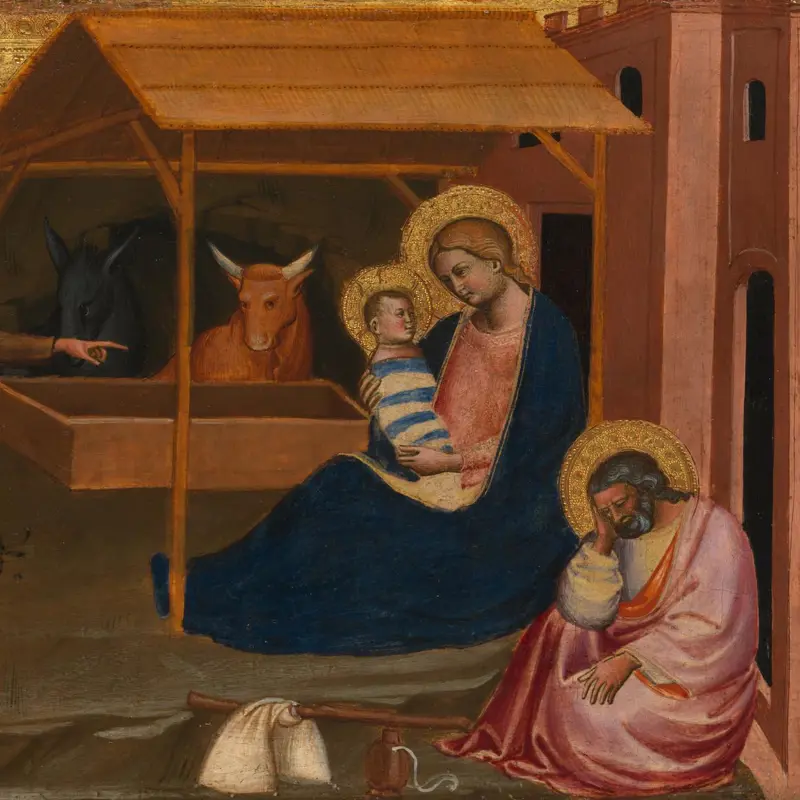Niccolò di Pietro Gerini, 'Saint Peter: Left Main Tier Panel', 1387
About the work
Overview
This is Saint Peter, recognisable by the colour of his robes – he is traditionally shown wearing yellow and blue – and by the large golden key he holds. It is the key to the kingdom of heaven, which was promised to him by Christ (Matthew 16: 19).
The saint’s bare feet express his simplicity and humility, but he stands upon a textile decorated with phoenixes and gilded peacock heads against fanned out tail feathers, reflecting his status. Niccolò di Pietro Gerini used a technique called sgraffito to achieve the richness of the textile. It involved painting over a layer of gold leaf and then scratching the paint away in places, revealing the gold beneath.
The panel comes from the left-hand side of the main tier of an altarpiece showing the baptism of Christ.
Key facts
Details
- Full title
- Saint Peter: Left Main Tier Panel
- Artist
- Niccolò di Pietro Gerini
- Artist dates
- Documented 1368; died probably 1415, certainly by 1427
- Part of the group
- Baptism Altarpiece
- Date made
- 1387
- Medium and support
- Egg tempera on wood (probably poplar)
- Dimensions
- 123.5 × 37 cm
- Inscription summary
- Inscribed
- Acquisition credit
- Bought, 1857
- Inventory number
- NG579.2
- Location
- Not on display
- Collection
- Main Collection
Provenance
Additional information
Text extracted from the ‘Provenance’ section of the catalogue entry in Dillian Gordon, ‘National Gallery Catalogues: The Italian Paintings before 1400’, London 2011; for further information, see the full catalogue entry.
Exhibition history
-
2011Devotion by Design: Italian Altarpieces before 1500The National Gallery (London)6 July 2011 - 2 October 2011
Bibliography
-
1951Davies, Martin, National Gallery Catalogues: The Earlier Italian Schools, London 1951
-
1986Davies, Martin, National Gallery Catalogues: The Earlier Italian Schools, revised edn, London 1986
-
1988Gordon, Dillian, National Gallery Catalogues: The Early Italian Schools before 1400, revised edn, London 1988
-
2001
C. Baker and T. Henry, The National Gallery: Complete Illustrated Catalogue, London 2001
-
2011Gordon, Dillian, National Gallery Catalogues: The Italian Paintings before 1400, London 2011
About this record
If you know more about this work or have spotted an error, please contact us. Please note that exhibition histories are listed from 2009 onwards. Bibliographies may not be complete; more comprehensive information is available in the National Gallery Library.
Images
About the group: Baptism Altarpiece
Overview
This altarpiece is the earliest known example that shows the baptism of Christ as the central image – in large multi-panelled altarpieces it was usually the Virgin and Child.
It was made for a chapel in Santa Maria degli Angeli, the Camaldolese monastery in Florence. The chapel was dedicated to the feast commemorating Saint John the Baptist’s death, but the central panel depicts the key moment in his life: when he baptised Christ in the river Jordan.
The inscription tells us that it was commissioned by one of the monastery’s monks, Don Filippo Nerone Stoldi, in memory of his mother. The monastery contained many altarpieces commissioned by Florentine families, which served as memorials. One of the monks’ duties was to say prayers for the souls of the dead on days specified by the families.

